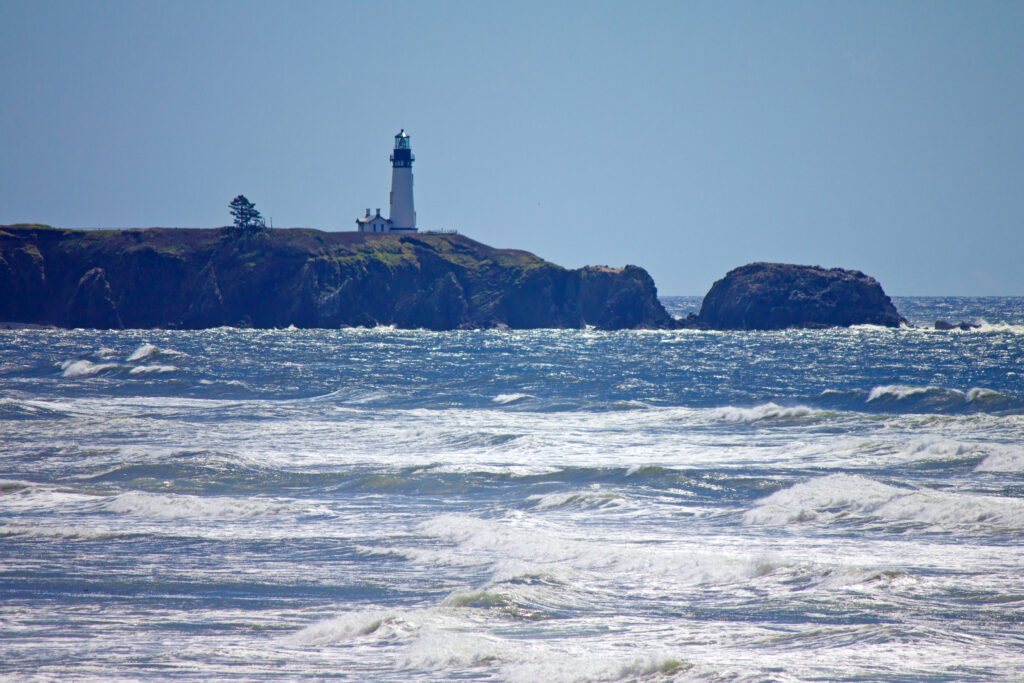
Kate Walker here, keeping the light on Robbins Reef. We sit to one side of the busiest harbor in the world so we have no trouble enlisting help. Inspector Snow, however, told me about problems with lighthouses in remote locations.
Florida Indians found isolated lighthouses easy targets for attack. Cape Florida Light Station was totally destroyed and one of its keepers killed in 1836.
Work at Yaquina Head Light Station in Oregon, was seriously hindered by the difficulties connected with the transportation of materials.
Since the commencement of work in the autumn of 1871 the lighters [small boats which shuttled material to the beach from the supply ships] have been destroyed twice, and the schooner engaged in bringing materials from San Francisco has been obliged to discharge most of her freight at Newport, to be reshipped in milder weather, besides twice getting stuck on the bar
at the mouth of the Yaquina Bay, and being once partially wrecked. Part of the materials have been hauled from Newport.
The keeper’s dwelling was completed in September 1872:
. . . The light would have been exhibited as early as January 1873, but for the fact that a part of the lantern had been lost at sea in transportation from the East, . . . Duplicates of the missing pieces have at length been received, and the light will be exhibited on the 20th of August, 1873.

Until a good road was built, the station was supplied by boat. A tramway 3 feet wide and 130 feet long hauled material up the 85-foot-high cliff, the cars pulled by horses. A radiobeacon was installed in 1937, greatly aiding mariners who had the right equipment aboard ship. The light was automated in 1966. Yaquina Head is still an active aid to navigation, owned by the Bureau of Land Management.

Having the right equipment was often as important as salary to the keepers. In 1863 Acting Collector Victor Smith, Puget Sound District, wrote that “to assistant keepers at Tatoosh (Cape Flattery) Light Station in the Washington Territory, Messrs Noyes and Moore, resigned their positions . . . on account of apprehended danger on the Island for the want of a small boat. The only boat on the rock had been swept away during a violent storm last winter and the Light House Board had been unable to replace it.” (Light-House Board procedures took time and new equipment could
be slow in reaching remote stations.)
Following is a list of supplies requested by one keeper on the Great Lakes:
3 Brushes, Scrub-hand
24 Machine wipers
1 Flue cleaner 2 1/4 inch
10 pounds Tallow
6 Towels Crash.
10 Towels Linen
12 Towels HandGlue .
6 Leather rings for plunger
10 galls. Lard oil
4 Buff Skins
3 Clock Oil Phails
1 Ring for table lamps
10 lbs. Whiting
6 lbs. Ground rice
2 lbs. Glue
2 Pecks Salt
************

Information is from:
1872, 1873 Annual Reports of the Light-House
Board; National Archive Record Group 26 Entry 6.

